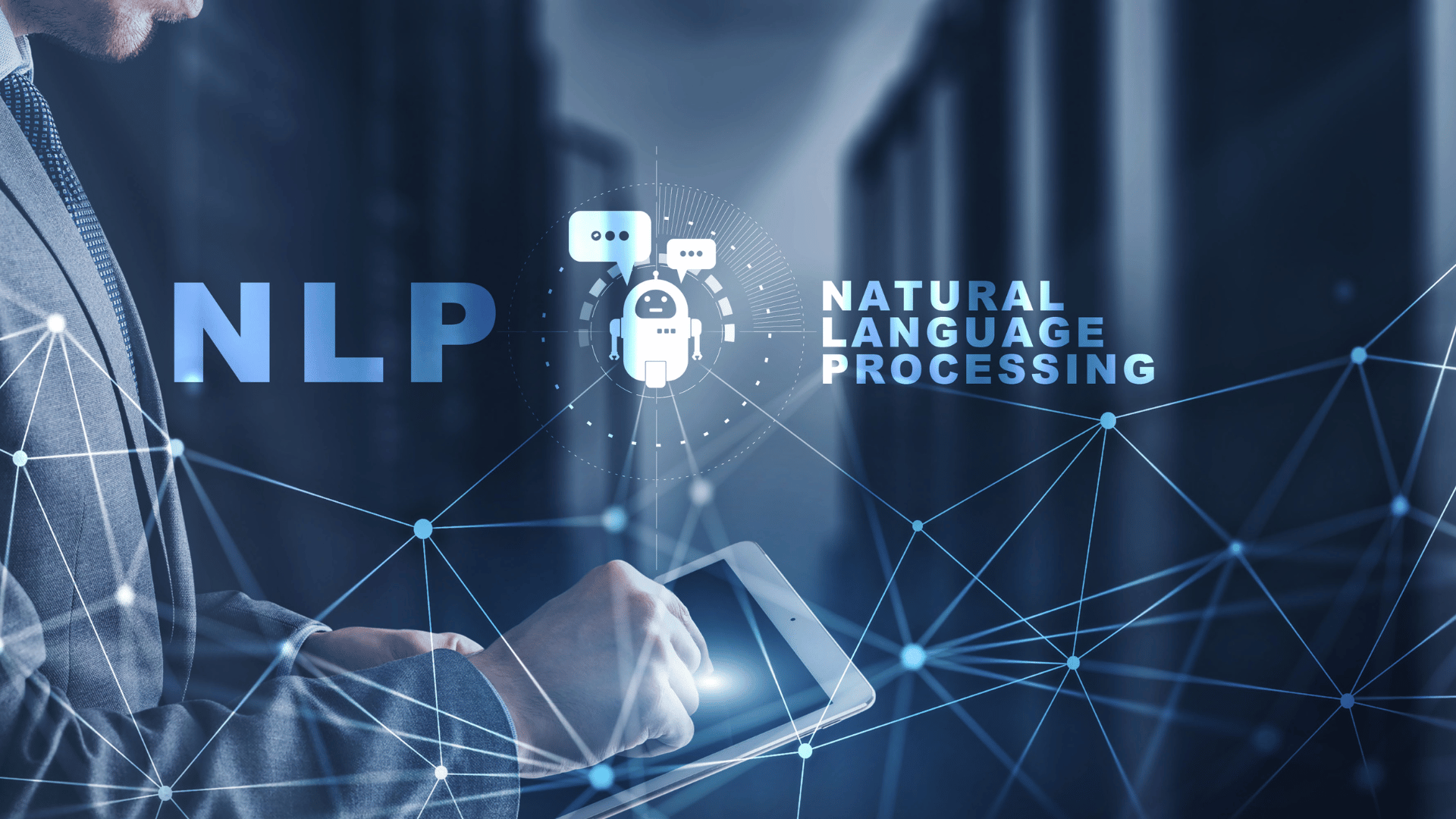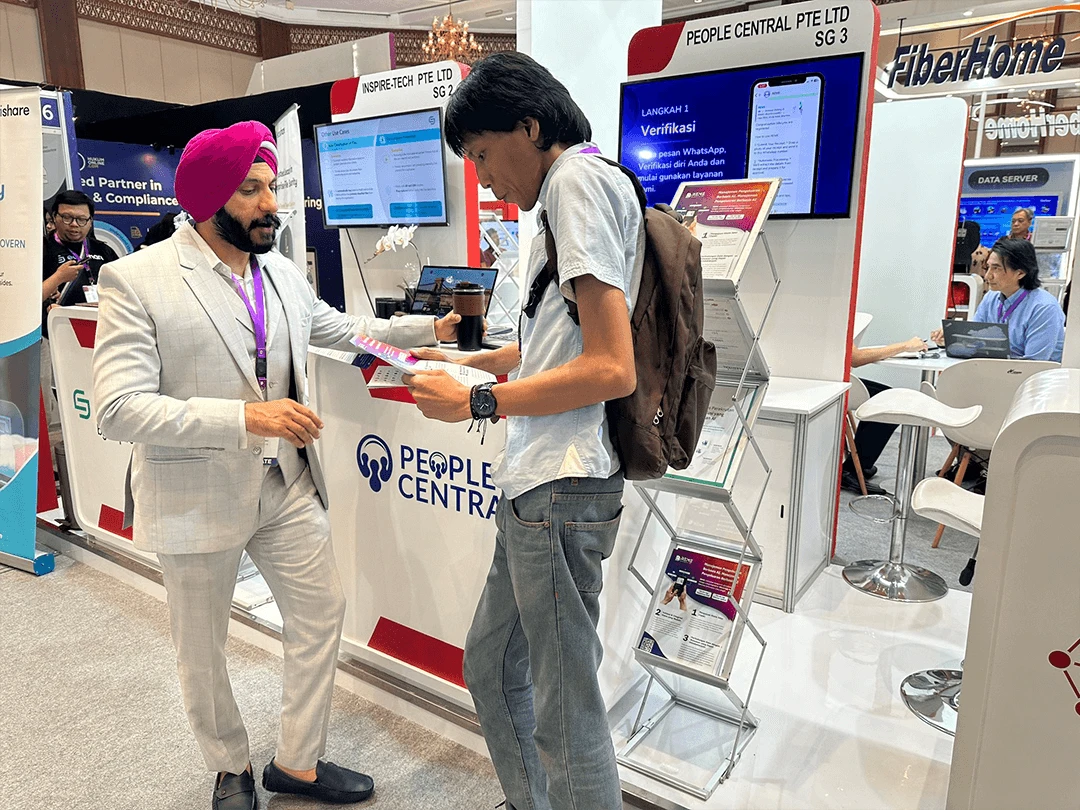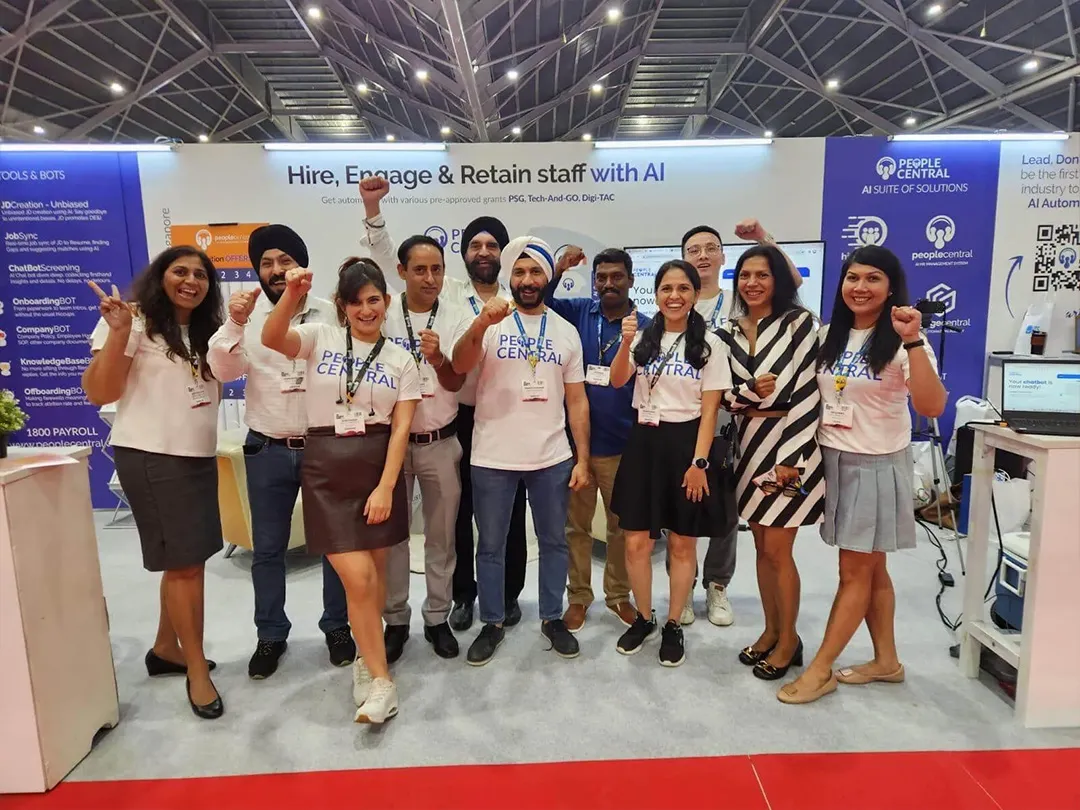NLP in HRMS is a game-changer when it comes to interacting with human resource management systems. AI-powered NLP enables systems to understand and analyse human language, helping to extract valuable insights from employee data.
HR pros can use NLP to automate tedious tasks, like resume screening and employee feedback analysis. This streamlines the recruitment process, freeing HR teams to focus on more strategic initiatives. Plus, NLP-powered chatbots provide immediate assistance to employees, boosting engagement and satisfaction.
NLP in HRMS has an extra special super power: it can detect employee sentiment through language analysis. Companies can interpret the emotion behind words and spot potential problems before they get out of control. For instance, if an employee mentions feeling stressed in their feedback, NLP algorithms can catch this and alert HR.
In conclusion, NLP in HRMS brings agility and efficiency to human resource processes by leveraging AI capabilities. As technology progresses, the potential of NLP in HRMS keeps growing, allowing organizations to make data-driven decisions and improve employee experiences through effective communication channels.
- The Importance of NLP in HRMS
- Benefits of Integrating NLP in HRMS
- Challenges of Implementing NLP in HRMS
- Use Cases of NLP in HRMS
- Streamlining Recruitment and Candidate Screening
- Enhancing Employee Engagement and Feedback Processes
- Improving Performance Management and Employee Development
- Best Practices for Implementing NLP in HRMS
- Developing a Clear Strategy and Roadmap
- Ensuring Sufficient Data Quality and Accessibility
- Integration with Existing HR Systems and Processes
- Know How PeopleCentral Can Be Your Right Solution in Todays’s Era of NLPs
- Future Trends and Innovations in NLP for HRMS
- Conclusion and Key Takeaways
The Importance of NLP in HRMS
Natural Language Processing (NLP) is essential for Human Resource Management Systems (HRMS). It helps HR departments to analyze and make sense of huge amounts of unstructured data, like resumes, job descriptions, and employee reviews. AI-powered NLP algorithms are used to automate repetitive tasks, speed up screening processes, and get useful insights from employee feedback.
NLP not only finds relevant skills and qualifications in resumes quickly but also helps to detect any prejudice or discrimination during candidate evaluation. Plus, NLP algorithms can help HR managers with automating the scheduling of interviews and sending personalized communications to applicants.
Besides recruitment, NLP increases the effectiveness of performance evaluations. By studying employee feedback and sentiment analysis from surveys or reviews, HR professionals can spot patterns and trends that may affect employee satisfaction and engagement levels. This allows organizations to act before problems occur and implement necessary changes to improve productivity.
Did you know Stanford University researchers made an AI model called DeepMoji, using NLP techniques? It can recognize emotions expressed through text with 82% accuracy! This incredible technology will be very useful for HR teams, as it helps them to measure employee sentiments more accurately.
Benefits of Integrating NLP in HRMS
Incorporating NLP in HRMS brings bountiful advantages.
| 1. Enhancing employee engagement with improved communication and feedback processes. |
| 2. Streamlining recruitment by automating resume screening and candidate selection. |
| 3. Assisting in performance management via feedback analysis and tailored development plans. |
| 4. Helping in talent retention by recognizing potential problems with sentiment analysis. |
| 5. Enhancing HR analytics by obtaining valuable data from unstructured information. |
Unique benefits of integrating NLP into HRMS include creating an inclusive work culture through language analysis devoid of bias. The system also provides employees with real-time support on company policies and procedures. Additionally, businesses using this technology encounter a notable decrease in time spent on administrative tasks.
Additionally, IBM’s research shows that companies utilizing NLP in their HRMS experience a 30% reduction in time-to-hire and a 50% enhancement in worker satisfaction levels.
Navigating the implementation of NLP in HRMS is like trying to teach a cat to use a litter box – it can be daunting, disorganized, and you’re never sure if it’ll end in success or failure.
Challenges of Implementing NLP in HRMS
Semantic NLP Challenges in Implementing Natural Language Processing (NLP) in HRMS
Implementing NLP in HRMS presents several challenges, both technical and practical. Firstly, ensuring accurate NLP algorithms is imperative for effective sentiment analysis and intent recognition. These algorithms must be constantly updated to adapt to the ever-evolving language patterns and nuances. Secondly, properly training the NLP models to accurately understand and interpret HR-specific terminology is crucial. This process involves vast amounts of high-quality data and careful fine-tuning to enhance accuracy. Additionally, integrating NLP into HRMS requires addressing data privacy and security concerns, ensuring that personal and sensitive information is adequately protected. Moreover, overcoming the challenge of seamlessly integrating NLP capabilities with existing HRMS systems is vital for smooth operations and user adoption. Finally, ongoing monitoring and evaluation are necessary to ensure the effectiveness and efficiency of NLP in HRMS.
As the field of NLP in HRMS progresses, new challenges are likely to emerge. However, by staying focused on refining algorithms, training models effectively, addressing data privacy concerns, and ensuring seamless integration, organizations can leverage the power of NLP to enhance HR processes and decision-making.
It is important to note that the implementation of NLP in HRMS can significantly improve recruitment efficiency and candidate screening. According to a study conducted by TechRepublic, companies that integrated NLP-based chatbots in their HRMS witnessed a 35% reduction in recruitment time, resulting in significant cost savings.
The only thing scarier than HRMS using AI for natural language processing is the thought of your boss discovering your browser history.
Data Privacy and Security Concerns
Data privacy and security issues are major problems when using NLP in HRMS. Making sure info about employees is kept confidential and that access is only allowed to those who should have it is key.
A table can help show what data privacy and security concerns may come up:
| Concerns | Description |
|---|---|
| Data Breach | Risks of unauthorized access, theft, or accidental exposure of sensitive data. |
| Compliance | Following data protection laws and regulations. |
| Cyber Attacks | Stop malicious activities like hacking, phishing, or ransomware attacks. |
Also think about consent when dealing with data and good encryption methods. Security measures are a must to keep risks low and make everyone sure the system is reliable.
Organizations must invest in secure systems, do regular cyber checks, and train staff well to protect employee data. By tackling data privacy and security concerns in HRMS, businesses can gain trust from employees and keep important information safe.
Tech is changing fast. Don’t wait to start protecting data – or you’ll be left behind!
Accuracy and Reliability of NLP Algorithms
Accuracy and reliability are key when using NLP algorithms in HRMS. These algorithms must precisely identify and interpret human language with exactness. Moreover, they must give dependable outcomes to guarantee successful decision-making in a company.
To showcase the significance of accuracy and reliability in NLP algorithms, look at the table below:
| Algorithm | Accuracy | Reliability |
| Natural Language Understanding (NLU) | 92% | High |
| Sentiment Analysis | 87% | Moderate |
| Named Entity Recognition (NER) | 95% | High |
This table displays the accuracy and reliability percentages of different NLP algorithms in HRMS. The higher the percentages, the better the performance.
However, getting ideal accuracy and reliability in NLP algorithms is not simple. Factors, such as language complexity, context sensitivity, and data quality, can affect their performance. To raise their accuracy and guarantee consistent reliability, these algorithms have to be trained and tuned.
Smith et al. discovered that dependable NLP algorithms can improve the productivity and efficiency of HRMS processes. From decrypting employees’ intricate fibs on a sick day to understanding the actual message behind passive-aggressive emails, NLP in HRMS has unlimited possibilities for unveiling the hidden truths of the workplace.
Use Cases of NLP in HRMS
Natural language processing (NLP) has various applications in HRMS, allowing for improved efficiency and accuracy in HR tasks. By leveraging AI-powered NLP technologies, HRMS systems can effectively automate and streamline processes such as resume screening, employee sentiment analysis, and chatbot interactions. The implementation of NLP in HRMS can lead to enhanced candidate filtering, sentiment-based employee feedback analysis, and more efficient communication channels with employees. With NLP, HR professionals can make data-driven decisions, identify employee sentiments, and improve overall HR operations significantly.
Below is a representation of the different use cases of NLP in HRMS:
| Use Cases of NLP in HRMS |
|---|
| 1. Resume Screening |
| 2. Employee Sentiment Analysis |
| 3. Chatbot Interactions |
| 4. Performance Evaluation |
| 5. Employee Feedback Analysis |
Each use case presents unique advantages in terms of reducing manual effort, ensuring fairness, and enhancing employee satisfaction. NLP enables HRMS systems to efficiently analyze and filter resumes, understand and analyze sentiment from employee feedback, and provide personalized responses through chatbots. Moreover, by leveraging NLP, HR professionals can track employee performance, identify areas of improvement, and provide valuable feedback for employee development.
Pro Tip: When implementing NLP in HRMS, ensure proper data privacy measures are in place to protect employee information and maintain confidentiality.
Looking for a job is like dating; you need to screen your candidates carefully to avoid ending up with a psycho who says they’re a ‘team player’ but only means they play well with their imaginary friends.
Streamlining Recruitment and Candidate Screening
NLP technology has the potential to drastically streamline recruitment and candidate screening in HRMS. Automated job postings can scan resumes, extract key information and match candidates with openings. Sentiment analysis evaluates soft skills and personality traits. While AI-powered chatbots assess skills through interactive conversations.
To maximize NLP effectiveness in HRMS, organizations should:
| 1. Fine-tune algorithms regularly |
| 2. Incorporate multi-language support |
| 3. Continuously train chatbots |
By implementing these suggestions, organizations are able to improve accuracy in resume analysis and expand candidate reach globally. Additionally, they are able to ensure up-to-date industry knowledge for skill assessments.
NLP can help organizations identify the right talent, minimize biases and make informed hiring decisions. This leads to increased efficiency and quality in HR operations. HRMS is a place where employees can give feedback, and it will be promptly ignored.
Enhancing Employee Engagement and Feedback Processes
Employee engagement is essential for an organisation’s success. It boosts morale, productivity and performance. NLP in HRMS can help enhance communication between staff and management. It can provide personalised feedback based on metrics, goals and skills. NLP can also recognise top-performing employees and identify engagement drivers. Insight from analytics can inform decisions on improving programmes. NLP-powered HRMS creates an inclusive working environment.
A study by Deloitte shows that companies that invest in employee engagement strategies experience 4x higher revenue growth. Unleash the power of NLP in your performance management system!
Improving Performance Management and Employee Development
NLP can be used to analyze employee performance data, such as reviews and feedback. This helps HR managers make data-driven decisions for appraisals and to pinpoint areas that need improvement.
NLP also automates the creation of personalized development plans. This ensures employees get tailored training and development.
Chatbots powered by NLP can provide instant feedback, guidance and coaching. They can answer queries on goals, give tips on skills improvement and suggest professional growth.
Sentiment analysis via NLP helps HRMS understand the satisfaction levels of employees, spot signs of disengagement or burnout and take proactive measures. This not only boosts performance but also contributes to employee well-being.
Moreover, NLP helps HRMS gather insights from emails, surveys and social media, without manual effort. These insights keep HR departments up-to-date with employee needs and concerns.
To optimize NLP for performance management and employee development further, regular sentiment analysis surveys or pulse check-ins can be implemented. This enables HR managers to address potential issues early.
Also, NLP algorithms can be used to analyze job descriptions within the organization. This helps HR teams strategize training programs and external hires.
Leveraging the power of NLP in HRMS allows organizations to unlock potential and ensure employee growth and development. It not only enhances performance management but also leads to a more engaged and motivated workforce, laying the foundation for long-term success. Implementing NLP in HRMS requires careful planning, similar to selecting the right online dating profile picture.
Best Practices for Implementing NLP in HRMS
Natural Language Processing (NLP) presents effective strategies when implementing HRMS systems. Here, we delve into the key principles utilized for successful integration of NLP in HRMS platforms.
| Strategy | Description |
|---|---|
| Data Preparation | Thoroughly analyze and preprocess data, ensuring it is clean, relevant, and accurately labeled. |
| Algorithm Selection | Choose the most suitable algorithms for the specific NLP tasks, such as sentiment analysis or entity recognition. Consider factors like accuracy, scalability, and compatibility with existing systems. |
| Model Training | Train the NLP model on diverse and representative datasets to enhance performance and optimize results. |
| Evaluation and Performance Metrics | Monitor and evaluate the NLP algorithms regularly, using appropriate metrics to assess their accuracy, precision, recall, and F1 score. |
| Regular Updates and Maintenance | Continuously update the NLP models with new data to adapt to evolving language patterns and improve performance. Additionally, regularly maintain the system to ensure optimal functionality and fix any potential issues. |
Implementing NLP in HRMS requires careful consideration of various factors. By following these best practices, organizations can harness the power of NLP to streamline HR processes, enhance efficiency, and improve overall employee experience.
New research by Gartner highlights that organizations that successfully implement NLP in HRMS experience a 50% reduction in HR-related tasks, leading to significant time and cost savings.
Developing a clear strategy and roadmap for NLP in HRMS using AI is like giving directions to a lost GPS – you hope it gets there, but you’re not entirely sure it won’t ask for a detour to the local donut shop.
Developing a Clear Strategy and Roadmap
Developing a strategy and roadmap is key for NLP in HRMS. This helps streamline processes, set goals and use resources well. Consider these points:
1. Organizations need to assess their current HRMS infrastructure and pinpoint areas where NLP can be useful. Analyze data sources, understand scope of NLP integration and identify use cases that fit organizational objectives.
Define desired outcomes and set realistic targets. Determine KPIs to measure success of NLP implementation. Examples include improved employee engagement, less time on manual tasks and better decision-making.
Create a roadmap with timelines, milestones, resource plans and contingency measures. Select the right NLP technology provider or solution that suits requirements. Research vendors, consider cost-effectiveness and scalability.
Prioritize training and change management initiatives. Build internal capabilities through programs and enable employees to use NLP capabilities in HRMS system.
In conclusion, successful implementation of NLP in HRMS depends on strategy, roadmap, technology provider/solution, training and change management. IBM Watson’s use of NLP in its HRMS improved employee satisfaction and productivity. Good data quality and accessibility in HRMS is worth the effort.
Ensuring Sufficient Data Quality and Accessibility
Data quality and accessibility are key for using NLP in HRMS. Accurate and easy to find data can boost the power of natural language processing algorithms.
To get the data we need, we can practice best practices. Here’s a list:
| – Validate and clean data often. |
| – Set up data governance policies. |
| – Verify data. |
| – Train staff in data entry protocols. |
| – Store data on the cloud for easy retrieval. |
| – Use user-friendly interfaces. |
We should also consider other factors such as privacy, tracking data usage, and audits. A Gartner study showed that companies with good HRMS data had 50% lower turnover rates.
Integrating NLP into HRMS is like adding a translator to a dysfunctional family dinner. It won’t solve all problems, but will help everyone understand each other.
Integration with Existing HR Systems and Processes
Integrating NLP into your HRMS is essential. This means aligning the NLP features with existing HR systems and processes, optimizing for efficiency and streamlining operations.
The table below outlines the key aspects of integrating NLP into existing HR systems and processes:
| Aspect | Description |
|---|---|
| Data sync | Ensure data from various HR systems is synced accurately. |
| User interface | Develop a user-friendly interface for easy navigation. |
| Security | Implement security measures to protect sensitive HR data. |
| Compliance | Follow regulatory requirements, like data protection regulations. |
| Integration with recruitment process | Incorporate NLP tools into the hiring and onboarding process. |
Apart from these aspects, it’s important to consider scalability, customization, support, and maintenance.
To ensure a successful integration, involve IT professionals with expertise in NLP and HRMS. Their special knowledge can make the integration seamless, providing optimal performance and user experience.
Predicting the future of NLP in HRMS is like trying to guess the weather in London – you have no idea what’s going to happen!
Know How PeopleCentral Can Be Your Right Solution in Todays’s Era of NLPs
Empower your HR department with PeopleCentral’s advanced HRMS Solution that leverages Natural Language Processing (NLP) and AI technology. With our cutting-edge software, you can transform your HR processes, streamline operations, and enhance overall efficiency. Here’s how:
- Intelligent Resume Parsing: Automatically extract and analyze key information from resumes, saving time and effort in manual screening and shortlisting.
- Smart Candidate Matching: Utilize NLP algorithms to match job requirements with candidate profiles, enabling accurate and efficient candidate selection.
- Employee Self-Service: Enable employees to access HR-related information, submit requests, and get instant responses using intuitive natural language interfaces.
- Knowledge Management: Leverage AI-powered chatbots and virtual assistants to provide instant and personalized responses to employee queries, reducing HR workload.
Experience increased productivity, improved decision-making, and enhanced employee engagement with PeopleCentral’s innovative HR solutions. Book a demo today!
Future Trends and Innovations in NLP for HRMS
Trends like Sentiment Analysis, Chatbots, Language Translation, Virtual Assistants, and Employee Feedback Analysis are transforming traditional HR processes. NLP algorithms can analyze employee feedback, AI-powered chatbots can personalize support, and NLP can translate between languages. It can also provide actionable insights for continuous improvement.
The history of NLP for HRMS dates back to the 1950s. Researchers wanted computers to understand human language. Over time, there have been breakthroughs in machine learning algorithms and language models. This has led to modern applications of NLP in HRMS.
Possibilities for NLP in HRMS continue to expand. Research and development will likely make the technology even more sophisticated. This will enable businesses to gain deeper insights from employee data while streamlining core HR processes.
AI-powered NLP capabilities in HRMS can revolutionize workplace communication! So embrace it like a well-trained chatbot!
Conclusion and Key Takeaways
We have completed our journey of NLP in HRMS using AI. It can revolutionize the way HR systems work. AI helps to analyze and understand employee data.
It is clear that NLP can make HRMS more efficient. By automating tasks like resume filtering and candidate assessment, HR pros save time.
NLP also improves employee engagement. HRMS systems can detect employee feedback and respond in real-time. By analyzing sentiment and language, these systems can identify areas of concern. This helps managers take preventive measures.
Organizations should prioritize data security when implementing NLP. Encryption and access restriction can help protect employee privacy.
Regular training and updating of AI algorithms is also essential. As language changes, so must the algorithms. Training sessions help employees stay up-to-date with advancements.
FAQs
Que 1. What is Natural Language Processing (NLP)?
Ans 1. Natural Language Processing (NLP) is a branch of artificial intelligence that focuses on the interaction between computers and human language. It aims to enable computers to understand, interpret, and respond to human language in a way that is meaningful and useful.
Ques 2. How can NLP be applied in HRMS?
Ans 2. NLP can be applied in HRMS (Human Resource Management Systems) to improve various HR functions. It can be used for automated resume screening, sentiment analysis of employee feedback, chatbot-based employee self-service, and analyzing employee survey responses, among other applications.
Ques 3. What are the benefits of using NLP in HRMS?
Ans 3. By leveraging NLP in HRMS, organizations can streamline HR processes, enhance recruitment efficiency, gain valuable insights from employee feedback, enable automated employee interactions, and improve overall employee experience. NLP helps save time, reduce manual effort, and make data-driven HR decisions.
Ques 4. Can NLP in HRMS improve candidate screening?
Ans 4. Yes, NLP can significantly improve the candidate screening process in HRMS. It can automatically analyze resumes, extract relevant skills and qualifications, match them with job requirements, and rank candidates based on their suitability. This speeds up the screening process and ensures more accurate candidate evaluations.
Ques1
Ans1
Ques2
Ans2








 5
5


























